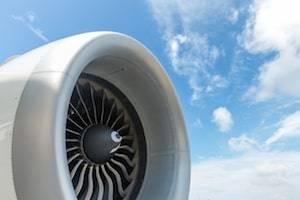NTSB's Investigation Sheds Light on Southwest’s Boeing 737 Fatal Engine Failure
New facts emerged in Wednesday’s hearing about the fatal aviation accident on a Southwest flight in which one passenger was killed after engine debris shattered the window she was nearly sucked through. The National Transportation Safety Board (NTSB) released new testimony saying passengers rushed to pull Jennifer Riordan back into the airplane after seeing her head, torso, and arm hanging out of the broken window. Flight attendant Rachel Fernheimer recalled that Jennifer’s seat belt was still fastened as one passenger reached outside of the airplane and grabbed her shoulders to pull her body back in.
Pilots emergently landed the Boeing 737 in Philadelphia after learning that passengers were injured. Eight passengers suffered injuries, and Jennifer Riordan died tragically. This was the first death on a U.S. airline flight since 2009.
The NTSB focused its nearly six-hour hearing on the cause of the Boeing 737’s engine blow up that spewed shrapnel, shattered the aircraft’s window, and caused rapid depressurization. The panel questioned officials from Boeing, Southwest Airlines, and airline part makers on the design and inspection of fan blades on the engine made by CFM International, a joint venture of General Electric and France's Safran S.A.
Mark Habedank, with fan blade maker CFM, said that an examination of the broken blade revealed a 1/16-inch crack that likely existed during the blades’ last inspection in 2012. However, the investigators' untimely discovery came after the blade broke off at 30,000 feet. The NTSB panel also learned that coating condition, lubrication, and the length of operating time contributed to the fan blade’s failure. Representatives from CFM recommended the use of more sophisticated tests using ultrasound or electrical currents and frequent inspections and lubrication of the blades.
This disaster comes only two years after a similar fan-blade incident in a Southwest jet engine that broke up over Florida. “We determined early that we would require some corrective action in that it was an unsafe condition,” Federal Aviation Administration expert on engines, Christopher Spinney, testified during Wednesday’s hearing, “but we also determined we had some time.”
In the wake of this most recent catastrophe, airline inspections have discovered eight other fan blades on similar CFM engines that also had cracks. CFM and FAA officials are now considering whether blades should be replaced periodically even if they do not show wear. The investigation continues as the NTSB determines a probable cause for the accident.
If you have been injured in an aircraft, or if someone you know lost a life due to airline negligence, it is critical to work with trustworthy legal representation to thoroughly investigate the accident. TKK understands complex aviation regulations, and our experienced litigation team will prove liability. Our lawyers are experienced Chicago aviation attorneys and have won cases nationwide. For more information, call us at 312-605-8800 or contact us online for a free consultation.
TKK blog Center
November 19, 2025 in Medical Malpractice
Botched Abdominal Surgeries Lead to Lifelong GI Tract Issues
Read MoreOctober 16, 2025 in Personal Injury
How Can a Personal Injury Attorney Help After a Refinery Accident?
Read MoreSeptember 17, 2025 in Personal Injury
Back to School: Are Universities Liable for Student Injuries?
Read More


 By
By 






